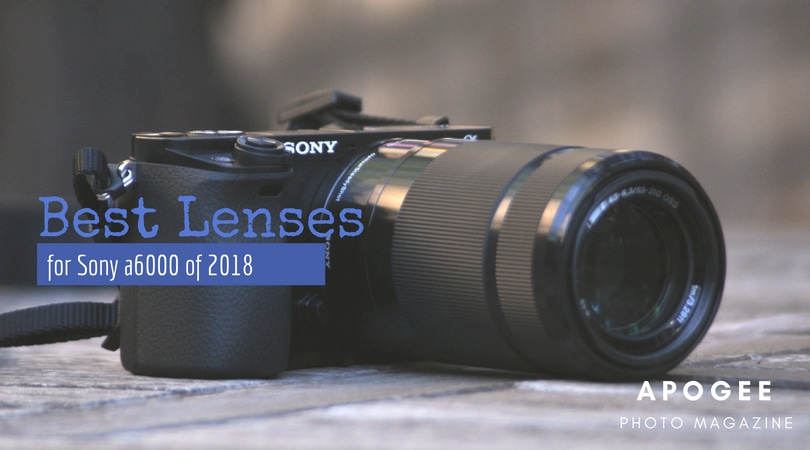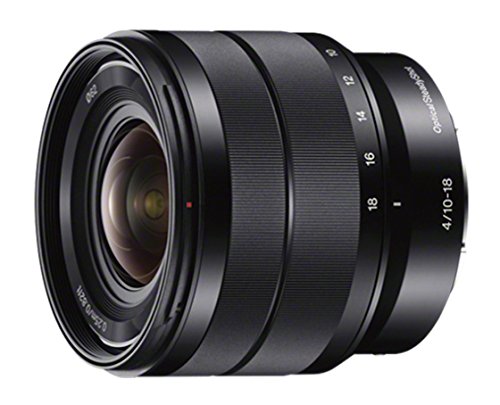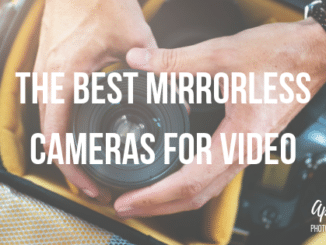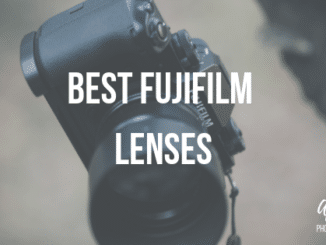
The Sony a6000 was one of the most popular mirrorless cameras ever released. It’s versatile in usage, gives excellent quality images, and is extremely affordably priced. Even though there are other models in the form of the a6300, a6500, and others, the a6000 is a highly competitive camera for the entry level mirrorless market and incredibly reasonably priced.
It brings a competitive yet relatively average 24.3 megapixels of resolution to the fore. But unless you’re regularly making large prints, this is actually more resolution than you need. 24.3 megapixels gives you plenty of room for generous cropping of images without losing out on too much subject detail.
With its APS-C sized sensor (sized 23.5 x 15.6mm) it has 1.6 times the surface area of the Micro 4/3rds cameras released by Panasonic and Olympus. And with 13 times the area of the 1/2.3” sensors that compact cameras typically use the a6000 and its cousins are supremely capable in low light settings. The autofocus capabilities are phenomenal, and the lenses provided are designed to focus quickly and accurately to take maximum advantage of this.
So what sort of lens do I want to pair with the Sony a6000? It uses Sony’s E-mount system and is meant to be paired with Sony E lenses. But the E-mount system is also compatible with Sony FE lenses. And there is a reasonably large number of lenses available of all focal ranges and apertures. So let’s consider some factors surrounding lens selection.
What should I be looking for in a Sony a6000 lens?
What photography subjects am I shooting?
This may be the most important question to consider because your choice in subjects somewhat determine what aperture values and focal lengths you’ll be shopping for. If you’re a portrait photographer, you’ll likely be looking for wide open apertures like f/2 or below. If you need a landscape lens, then you want focal lengths below 35mm to capture a wide angle field of view. But the aperture can max out at f/4 since you’re going to want more depth of field in your image.
Mount System and Manufacturer
All of the lenses designed to pair with the a6000 use Sony’s E-mount system. Sony also has FE lenses that are meant to be used with its full frame line of cameras like the A7 series. But the nice thing about the FE lenses is that they use the same E-mount as the E lenses that the a6000 uses. Fortunately for A7 series owners looking to snag a less expensive E-mount lens, the reverse is also true. If you happen to own one of the A7 lines of cameras, it will actually self-crop the sensor from full frame to APS-C to use E lenses. This gives us quite a bit of extra diversity; FE lenses do tend to cost more but if there’s a nice one you want for your a6000 don’t hesitate to snap it up.
Several manufacturers also make lenses for the Sony system. Laowai and Zhongyi are two Chinese manufacturers that make relatively low cost lenses that often have unique f/stops like the MItakon f/0.95 or great focal lengths like the Laowa 9mm f/2.8 Zero-D. Sigma also has some great offerings for this system.
Optical Image Stabilization
Image stabilization is a tremendously useful tool to have. Some Sony cameras such as the a6500 and many of the A7 iterations have built-in sensor stabilization. Sensor stabilization ensures no matter which lens that’s attached to your camera, shooting handheld will have minimal effect on image sharpness and clarity.
But the a6000 is not a camera that comes with sensor stabilization. Therefore, we should always be on the lookout for O.S.S. when it comes to Sony lenses. Optical Steady Shot uses hardware elements to help correct for all of the jittery hand motions that we unconsciously make while holding the camera.
Optical Steady Shot also offers benefits for shooting in low light environments. Normally, I’d have to lower my shutter speed to compensate for lack of light exposure. But these slower speeds are also more easily affected by motion blur when shooting handheld. Thus I can get sharper pictures in low light settings because OSS will reduce or eliminate said blur. Tripods still aren’t entirely outclassed but OSS is always a great feature to have.
What about the kit lens?
Kit lenses are often disappointing because they usually have fairly narrow maximum apertures. They also lack features like image stabilization and don’t use the highest quality glass. The idea is to get you out shooting as quickly – and cheaply – as possible, of course. And that you’ll one day decide to upgrade to much better glass.
The two kit lenses offered with the Sony a6000 are the 16-50mm f/3.5-5.6 and 55-210mm f/4.5-6.3 OSS. The first is an everyday walk around lens. 16mm is a wide angle field of view, and 50mm covers portraits and other focused subjects. It’s also a pancake lens, which means when retracted it sticks out only slightly more than an inch from the camera body. This helps retain the slim profile; keeping the a6000 pocket-sized even with a lens attached.
Pancake lenses often have to compromise on sharpness and clarity, however. There are just too many structural compromises made to keep the lens tiny that can cause them to underperform compared to standard sized lenses. But as a fun everyday shooter, the kit lens does incredibly well.
The 55-210mm f/4.5-6.3 offers much more reach as needed for distant targets like nature and candid street or event photography. One nice feature of the 55-210 is that it does come with OSS. Image stabilization becomes even more important when using telephoto zooms because the shake effect is magnified with longer focal lengths.
Best lenses for the Sony a6000
The best lens for your Sony a6000 really does depend on your photography targets. If you want to specialize in portraits, then the list will change, likewise, if you’re a travel photographer looking for a mix of versatile glass. So this is a collection of the best lenses regardless of price as well as some alternative choices that offer slightly different features and price ranges that may be better suited to your needs as a photographer.
Best Landscape Lens: Sony E 10-18mm f/4 OSS
The 10-18mm focal length of this Sony zoom lens is perfect for capturing expansive views of landscapes, mountain ranges, forests, and more. Architecture photographers will love the sharpness throughout the zoom range, even at the 10mm focal length. The corners remain good but improve once the lens is stopped down slightly to f/5.6.
The lens is on the expensive side but comes with the Optical Steady Shot system that ensures handheld shots have enough stabilization to preserve image sharpness. And at 8 ounces it’s quite light for such a high quality lens. The aperture blades also use a unique rounded design meant to shape the out of focus bokeh. Conventional blades usually create angles that result in polygonal bokeh that are less satisfactory.
- Angle of View (APS-C) - 109 ° - 76 °
- Minimum focal length of 10 mm (15 mm in 35 mm-camera equivalency)
- Minimum Focus Distance : 0.82 ft (0.25 m), Maximum Magnification ratio : 0.1x
- Superbly detailed images;Aperture Maximum: f/4 ; Minimum: f/22. 35mm equivalent focal-length (APS-C) : 15-27mm
- In-the-box:Hood (ALC-SH123), Lens front cap, Lens rear cap
Best Alternative Landscape lens: Laowa 9mm f/2.8 Zero-D APS-C E-Mount Lens
If the Sony E 10-18mm f/4 OSS above is too expensive, this Laowa offering is almost half the price. As a wide angle prime lens, it is fixed at 9mm. This still makes it incredibly useful for interior architecture and landscape work.
The wider maximum aperture of f/2.8 also gives it a bit more versatility in low light settings. Sony a6000 owners who want to dabble in astrophotography should definitely consider adding this lens to their collection. Laowa claims the lens has absolutely zero distortion which is extremely impressive for such an ultra wide-angle.
The Zeiss Touit 12mm f/2.8 Lens is also extremely competitive but twice the price of the Laowa 9mm. And as a prime lens, it doesn’t have the range the Sony provides. For once, the Sony is a surefire win over a Zeiss lens. But as we’ll see, later this isn’t always the case.
- Laowa 9mm f/2.8 Zero-D. component for: SLR.
- Lens structure (elements / groups): 15/10.
- Lens type: Ultra-wide lens. Compatible camera brands: Sony. Product colour: Black. Diameter: 5cm.
- Filter size: 4.9 cm.
- Product length: 6 cm
Best All-in-One Lens: Sony 18-200mm f/3.5-6.3 OSS
The Sony 18-200mm f/2.5-6.3 OSS is the most versatile lens available for the a6000. This lens covers everything from ultra wide-angle to telephoto views, this lens may stay on your camera most of the time. The maximum aperture isn’t all that wide, making it less than ideal for portrait work and other applications where we want a shallower depth of field.
And it’s significantly heavy; at 18.2 ounces it weighs as much as the Sony a6000 itself. Adding that much extra weight really changes how the mirrorless kit handles. One of the key advantages to going mirrorless is keeping things trim, as the pancake kit lens attests.
But being able to switch from an expansive view of a city block to zooming in on an individual subject on the street without changing lenses makes this a great buy anyway. For users coming from compact cameras, the 18-200mm has an effective 11x optical zoom range; very impressive for a mirrorless camera lens. Optical Steady Shot ensures even at the telephoto end sharpness is preserved. This lens covers the most focal range of all the lenses here.
- High-magnification zoom with image stabilization
- Minimum focus distance0.3 (Wide)-0.5 m (Tele) (0.99 [Wide])-1.64 ft [Tele]);Maximum 0.35 x, Focal Length : 18-200 mm
- 18 mm wide-angle to 200 mm telephoto assures coverage to capture any scene
- Optical image stabilization expands hand-held shooting options
Best Alternative All-in-One lens: Sony 55-210mm f/4.5-6.3 OSS
At about a third of the price of the above 18-200mm, the 55-210mm is a nice alternative choice, especially if you have the 16-50mm kit lens. It is also a secondary kit option for the a6000 and is readily available. The aperture is even narrower, however, making it somewhat less satisfying for shallow depths of field and low light photography. But OSS helps with handheld low light shots by providing stabilization with the aperture as open as it gets.
Constant aperture lenses are much handier when you need to shift often through a wide focal range. The Sony 18-105mm f/4 OSS doesn’t have nearly the reach of this lens but may make for an even better all-in-one lens for the money.
- Provides a wide focal range of up to 315mm (35mm equivalent) ideal for sports or nature shooting
- Quiet Internal focusing makes smooth, responsive AF possible with minimum noise. Perfect for video capture
- Optical SteadyShotTM Image stabilization makes it easier to achieve crisp, stable images
- Optical SteadyShotTM Image stabilization makes it easier to achieve crisp, stable images and video in low-light or when zooming in on distant subjects
- Accepts 49mm Filters
Best Everyday Lens: Sony Vario-Tessar T* E 16-70mm f/4 OSS
The focal range of this Sony lens makes it perfect for everyday street shooting. 16-70mm covers everything from landscapes to portraits of distant subjects. The constant f/4 aperture ensures exposure remains constant despite changes in focal range but also drives the price up. And with Carl Zeiss German manufacturing we can be sure the optical quality and manufacturing is top of the line.
The lens has an entirely metal barrel which gives it a polished, premium feel. And being dust and moisture resistant you’ll feel that much more confident when shooting outdoors in the elements. Just remember that the a6000 itself is not weatherized (the a6500 is, however).
Zeiss glass uses an advanced T-Star coating to eliminate lens flare, reflections and light scattering at the glass-air boundary. The lens also has a 0.23x magnification ratio and a minimum focusing distance of 1.15 ft., making it an acceptable macro lens. True macro lenses are 1:1 or more, but for image quality and versatility, the Vario-Tessar is one of the best lenses for the s6000.
- Lens Format: APS-C
- Focal-length: 16-70mm
- 35mm equivalent focal-length (APS-C): 24-105mm
- Lens mount: E-mount
- This version is originally intended for sale outside the US and may contain adapters, manuals, and warranties not compatible with US standards.
Best Alternative Everyday Lens: Sony 18-105mm f/4 OSS
This lens is close, but not quite as wide angle as the Vario-Tessar. 2mm of focal range doesn’t seem like much. But when it comes to the wide angle end of the spectrum changing a few mm of focal range is immediately evident in the field of view. Constant aperture values are always nice for ensuring exposure remains even throughout the zoom range.
Another plus is that it has significantly more reach than the 16-70mm. This makes it a great choice if you’re looking for an everyday lens that can bring more distant subjects into crisp focus. One downside is that the lens is quite a bit heavier than the Vario-Tessar 16-70mm. At 15.1 ounces it’s nearly 50% heavier than the Zeiss model (10.9 ounces). Only the Sony 18-200mm weighs more than this 18-105mm.
- High performance E mount lens with excellent contrast; Minimum Aperture (F): 22
- Minimum Focus Distance : 1.48 (Wide) 3.12 ft (Tele), Maximum Magnification ratio : 0.11x, Focal Length : 18 105 mm
- Versatile 27 158mm (35mm equiv.) zoom range. Angle of view (APS C): 76° 15°. Number of aperture blades are 7
- Constant F4 maximum aperture throughout the zoom range. Filter diameter (mm):72 mm
- It is recommended that you use a lens hood to reduce flare and ensure maximum image quality.Focal Length (mm) 11/16 4 1/8 35 mm equivalent focal length (APS C) 1 1/16 6 3/16 inches
Best Portrait Prime: Zeiss Touit 32mm/1.8
You’re definitely paying more for the Zeiss difference, but professionals swear by the tight quality control standards and supremely sharp optics provided. The rubberized focus ring feels excellent when handled, and the entire lens is light and pairs nicely with the Sony a6000. And nine aperture blades come together to ensure bokeh has a pleasing rounded quality to them.
Like many portrait primes, the Zeiss f/1.8 will become sharper the more you stop down the aperture but still gives an incredible performance at f/1.8 The bokeh look incredible while subject sharpness will be top quality. Color fringing and distortion are pretty much nonexistent as well. For the price it would have been nice to have weatherization or image stabilization as well. So make sure you’re using a tripod or higher shutter speeds to maximize the sharpness this Zeiss glass provides.
- Innovative product design: The unmistakeable product design is based on an integrative concept and focuses on essential functional elements. Even the lens hood, typically an accessory, is seamlessly integrated into the overall design.
- Full compatibility: The lenses are fully-compatible and support all camera functions, including autofocus.
- Ideal aperture characteristics: he Touit lenses feature a nine-blade iris that closes to create an almost perfectly circular aperture. The effect of this is the creation of a particularly harmonious effect in the out of focus areas of the image ("Bok
- Smooth and reliable AF action: The focusing system of the Touit lenses is designed to guarantee robust and smooth autofocusing without any need for compromises or limitations in their optical design.
- Carl Zeiss T* anti-reflective coating: The optical elements of ZEISS lenses feature T* anti-reflective coating on all surfaces and an optical design that guarantees images of superior brilliance at all times, even in unfavourable lighting conditions.
Best Alternative Portrait Prime: Sony 35mm f/1.8 OSS
Like the Zeiss version, the Sony 35mm is relatively pricey. Nikon and Canon’s “Nifty Fifties” and similar portrait primes are far more reasonably priced. But it’s hard to give up such a versatile aperture and focal length combo. And it’s not so expensive that it’s worth buying an adapter specifically for the cheaper Nikon/Canon offerings, either.
The Sony 35mm f/1.8 is quite lightweight at 5.5 oz. And with a length of 1.77 in. It’s quite compact as portrait primes of this focal length tend to be. The 35mm f/1.8 really is one of the best second purchases you can make to start rounding out your lens collection. Another nice thing about this Sony lens is the baked in optical image stabilization which the Nikon and Canon versions don’t have.
With a minimum focusing distance of 1 foot, you’ll be able to get up close and personal as needed for beautiful portraits. But also able to step back and use the 35mm field of view to capture landscapes and other scenic vistas. 35mm (and 50mm) is the field of view considered closest to the human eye’s field of vision. This makes both of these focal lengths essential for any photographer to own as part of a lens collection. There is some debate as to which focal length best replicates the human eye.
- Compact, lightweight fixed F1.8 lens.Angle of View (APS C) 44 °
- Minimum Focus Distance : 0.99 ft (0.3 m), Maximum Magnification ratio : 0.15x, Focal Length : 1.38 in
- New optical design for excellent peripheral sharpness and contrast, Built in image stabilization
- Silent and smooth high speed focusing ideal for shooting movies. Superb focusing operation
- Lens group or elements is 6/8. If auto focus cant lock on or focuses on the wrong subject, step in and take total control with direct manual focus.Image stabilization (SteadyShot):Optical SteadyShot
Best Macro Lens: Zeiss Touit 50mm/2.8 Macro
Unlike some of the wider prime lenses, the Touit 50mm f/2.8 remains sharp even wide open. Since it is a moderate telephoto lens, it does give enough reach to single out distant subjects (35mm equivalent of 75mm focal length on the APS-C Sony a6000). Like the other Zeiss glass here it uses rubberized control rings for comfortable, precise control of the lens functions.
Being a true macro, it has 1:1 reproduction of the subject onto the image sensor. This means you’ll be able to capture incredible details on subjects as close as 6 inches. A 15 x 23mm subject will fill the entire frame of the field of view using this lens.
f/2.8 gives stellar low light performance compared to the alternative f/3.5 Sony lens; this is less important in settings where lighting is carefully being controlled. But natural light photographers working in the outdoors will find the extra 2/3rds of a stop of light more comfortable to work with. And the slightly shallower depth of field combined with the sharp Zeiss optics ensure you’ll always get your money’s worth with this lens.
- Zeiss Touit 50mm f/2.8 Macro Sony E-Mount Lens
- Complex floating lens system
- Physical construction of the lens
- BUNDLE INCLUDES: Zeiss Touit 50mm f/2.8 Macro Sony E-Mount Lens, Sandisk Extreme PRO SDXC 128GB UHS-1 Memory Card
- IN THE BOX: Front and Rear Lens Caps, Lens Hood
Best Alternative Macro Lens: Sony E 30mm f/3.5 Macro
The price of this lens is reasonable compared to the Zeiss Touit 50mm f/2.8 Macro, but you lose out on 2/3rds of a stop of light, which is pretty significant. The 30mm f/3.5 Macro is a bit of a budget option that’s not amazing but not overly good. The Zeiss Touit 50mm/2.8 Macro is such a premium lens that ticks every box you’d want for a portrait prime moderate telephoto.
The minimum focusing distance of this lens is 3.8 inches. While it can focus even closer than the Zeiss Touit, the 50mm focal length of the latter negates this somewhat. The minimum working distance of 0.9 in ensures manual focusing will give you incredible close ups. And as a true macro lens, you retain 1:1 capability on your subjects, ensuring fine details will be beautifully rendered.
- Lens not Zoomable
- Exceptionally portable and versatile for everyday use
- Minimum working distance of only 9.75cm with 1:1 magnification
- Simple, compact 6-group 7-element lens
- Internal stepping motor and Rear-focusing design for video capture
Conclusion
Other lens categories might have included astrophotography, extreme macro photography (1:4 or more) or other more specialized variants. But each of the pairs here matches the most common focal lengths and subject matters that photographers will want to shoot.
So which lens is the “best” here? Well, all and none of them, of course! Each lens pair reviewed has entirely different functions. A portrait prime is entirely different from an all-in-one zoom, and both have their place.
Zeiss lenses tend to stand out in any lens lineup. The German quality control and incredible optics mean they live up to the sharpness hype and elimination of chromatic aberration and flare issues around the glass-air interface. Also, the lenses look and feel premium. They use all metal and glass construction and are not overly heavy when mounted onto the a6000.
Sony lenses as a whole tend to be slightly higher priced than other manufacturers. The lack of a budget “Nifty Fifty” 50mm f/1.4 or 1.8 prime lens like Canon and Nikon have are testament to this. The difference is made up in the price, however.
From the a6000 to the A7X series, Sony mirrorless bodies tend to be extremely affordable for the features provided. The a6000 is a far more capable camera than the Canon Rebel series or Nikon D3400. So you do pay a bit more for the lenses but not only are they quality lenses but the camera body is extremely well priced.
Buying premium lenses on an entry level body can sometimes feel like a strange thing to do since you’ll eventually outgrow the capabilities of the Sony a6000 for another APS-C or full frame model. But the nice thing about growing a lens collection is that the lenses remain relevant. Sony’s E lenses and the cameras that use them are incredibly capable.
They’re mostly beginner to intermediate oriented but still remain relevant even in 2018. But even if you decide to transition to the professional A7X series Sony’s ensured they remain backward compatible thanks to the auto-cropping sensors. You really can’t go wrong with any of these E lenses!
























Leave a Reply